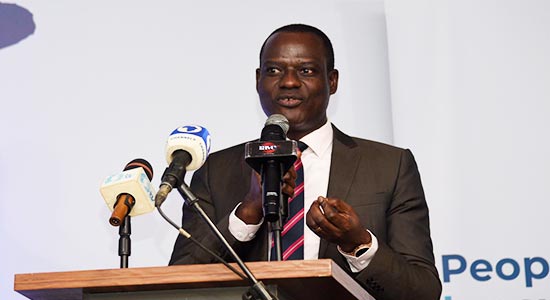Amidst pushback from some sections of the country, especially some
Northern politicians and the federal government have insisted that ongoing
tax reform was redesigned to support growth by addressing the current
challenges such as multiplicity of taxes, ambiguous and obsolete
provisions, reduce the tax burden on individuals and businesses
The federal government said instead of focusing on the unfounded
fears raised by those who are averse to the reform process, it would
instead expect Nigerians to understand that the aim is to promote the
ease of doing business to facilitate sustainable economic growth and
deliver shared prosperity for Nigerians.
The controversy has arisen from the perception that the proposed
formula would lead to lower revenue for some states and worsen poverty
in the north.
In an explainer that was made available to this newspaper yesterday,
chairman of the Presidential Fiscal Policy and Tax Reforms Committee, Taiwo Oyedele, said the reform won’t be disadvantageous to any section of the country.
However, he said the 5% to be ceded by the federal government can be
set aside for equalisation transfers to cater for any shortfall to a
state under the new model. “This ensures that no state is worse off in
the short term while significantly enhancing economic activities and
revenue for all states in the medium to long term,” Mr Oyedele stated.
The key targets of the proposed tax reform include single-digit number
of taxes, harmonised and efficient revenue administration, and an increase in tax-to-GDP ratio, economic competitiveness, and removal of the tax burden
on the poor.
I asked why the VAT proposal is generating so much controversy. Oyedele
said the current VAT system is fractured.
Some of the issues include the car that there have been disputes over
VAT administration between some states and the federal government
resulting in some landmark judgements and pending court cases. This is
compounded by the fact that VAT is not stated in the 1999 Constitution
thereby creating a lacuna.
“Our analysis shows that a central collection system is more efficient
and benefits all. Once the contentious issues have been resolved, then
VAT can be appropriately included in the constitution. The current sharing
the formula of FG 15%, States 50% and LGs 35% is proposed to become FG 10%, States 55% and LGs 35%.”
There is also the issue of the imposition of parallel consumption taxes in
some states, along with VAT, which increases the tax burden on the
people and contributes to multiple taxation. The reform seeks the
discontinuation of all consumption taxes other than VAT.
The current formula for sharing VAT among states is based on 20%
derivation, 50% equality and 30% population. The tax reform proposes a
different model of derivation, which will attribute VAT to the place of
supply and consumption rather than the current model, which attributes
VAT to the state where it is remitted, thereby favouring states with
companies headquarters.
The derivation under the new model will account for 60% of VAT
distribution for better equity and to discourage any state from
seeking to administer VAT as a state tax, which will not only result
in much lower revenue for all tiers of government but will impose a
higher burden on businesses.
Also, chairman of the Federal Inland Revenue Service Zacch Adedeji has
said if passed into law, the new process will ensure that states
without many headquarters, companies are pretty well treated and recognised
for their economic contributions.
Mr Adedeji had also assured that the new tax bill would not threaten or
affect the existence of some government agencies or the jobs of
individuals.
He said nothing about the four tax bills currently before the National
Assembly which threatens the existence of any agency, especially
National Agency for Science and Engineering Infrastructure (NASENI),
the National Information Technology Development Agency (NITDA) and the
Tertiary Education Trust Fund (TETFUND).





















